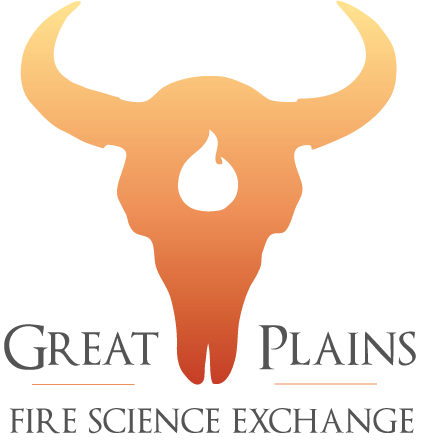Adult Education
The Arkansas River Valley Wildland Fire Academy operates at Arkansas Tech University. With an average attendance of over 300 students, the academy strives to meet the diverse needs of all firefighters by providing a well-rounded, safe and welcoming learning environment. Our mission is to enhance the abilities and skills of each firefighter in attendance.
This year the academy is offering courses for wildland firefighters from all wildland fire agencies ranging from 4 to 40 hours in length. Each course is taught by instructors from state and federal agencies, allowing the academy to provide unique experiences as well as a wealth of professional knowledge and abilities to each course.
Learn more about the Arkansas River Valley Wildland Fire Academy >
Read MoreThe Prescribed Fire Training Center (PFTC) is a unique program blending maximum field prescribed burning experience with a flexible curriculum of classroom instruction on foundational topics for prescribed fire practitioners. Participants will have the opportunity to complete portions of their National Wildfire Coordinating Group (NWCG) approved prescribed fire task books under the guidance of invited training specialists.
Read MoreThe Midwest Wildfire Training Academy (MWTA) is held in Jefferson City, Missouri each June. Emergency responders and wildland firefighters can focus on developing the practical skills training they need in their professions.
Read MoreMonitoring your management treatments, including fire, is important. Monitoring helps you to understand if your treatments have allowed you to reach your goals. Unfortunately, monitoring is often a low priority in the fire world. Fire effects monitoring can be as simple as photopoints (taking pictures from a fixed location at key times and comparing them to see your progress). NRCS and other extension organizations have guidelines for landowners that have easy to use methods lined out such as step point counts or biomass rulers. Folks working with agencies or organizations might opt to develop a more rigorous type of monitoring plan that includes species composition measurements. This type of monitoring requires the use of a database for storing and analyzing data.
FFI (Feat FireMon Integrated) is a free database system designed specifically for fire effects monitoring. The database is built on the monitoring protocols for the National Park Service and Forest Service, but has some flexibility. It stores vegetation data as well as fuels data, fire history, fire behavior, and much more. For the spatially adept, FFI can even interface with Arc Map to help you determine sampling locations and frequency. FFI will store pathways to your monitoring photos as well.
There are training courses around the country if you want to give it a try. There’s one coming up in the Southern Region: Southern Area Advanced Fire Academy, June 10-13. The class includes two days in the field learning field sampling methods and two days in the classroom learning FFI. You can attend the field, classroom or both sessions. The class is free if you work for an academy “partner”.
Southern Area Advanced Fire and Aviation Academy >
FFI: Ecological Monitoring Utilities >
Google Groups >
The University of Idaho now offers 14 online courses in Fire Ecology and Management, including many graduate courses. Students can complete a Masters of Natural Resources (MNR) with an emphasis in Fire Ecology, entirely online. The MNR program is for designed for working professionals. It is course-based, requiring 30 credits and a professional project.
Read MoreA Forest Stewards Guild report in partnership with Promise PCES LLC. May 2017
Read MoreNaturally occurring fires have historically been an important factor in determining plant and animal distribution and composition in Missouri. While natural fires are random and uncontrolled, prescribed burning is the process of applying a controlled fire to a predetermined area to meet certain goals and objectives. Prescribed fire is used as a tool to manage natural communities and planted grass stands. It can set back succession by controlling woody invasion, improve wildlife habitat by stimulating desirable and suppressing undesirable plant species, improve poor grazing distribution, and reduce wildfire risk. Other uses of prescribed burning include preparing sites for planting or seeding, removing slash or debris, and enhancing seed production of target plant species.
Read MoreThis review summarizes the fire effects information and relevant ecology of greater sage-grouse and Gunnison sage-grouse in North America that was available in the scientific literature as of 2016.
Read MoreIf you missed the 2014 Patch Burn Grazing field meeting in Grand Island, NE, you can still get a flavor for the presentations. Due to technical difficulties we did not capture the audio, but you can still see lots of great content in the presentations. I am confident that the authors will be happy to talk with you more about the work they shared. The PowerPoint presentations have been converted to .pdf files for better file management.
Managing Prairies for Biological Diversity and Ecological Resilience: Chris Helzer ([email protected])
Insights into Pyric-herbivory on grassland ecology, management and production: David Engle and Derek Scasta ([email protected])
Patch Burn-Grazing in the Northern Tallgrass Prairie of Eastern South Dakota: Alexander (Sandy) Smart ([email protected])
Chippewa Prairie Patch Burn Grazing Update: David Trauba and Joe Blastick ([email protected])
The Switzer Ranch: Sara Sortum
Read More